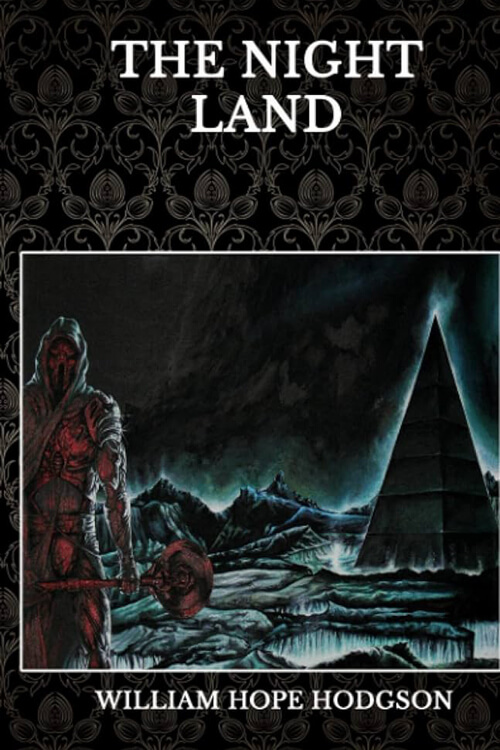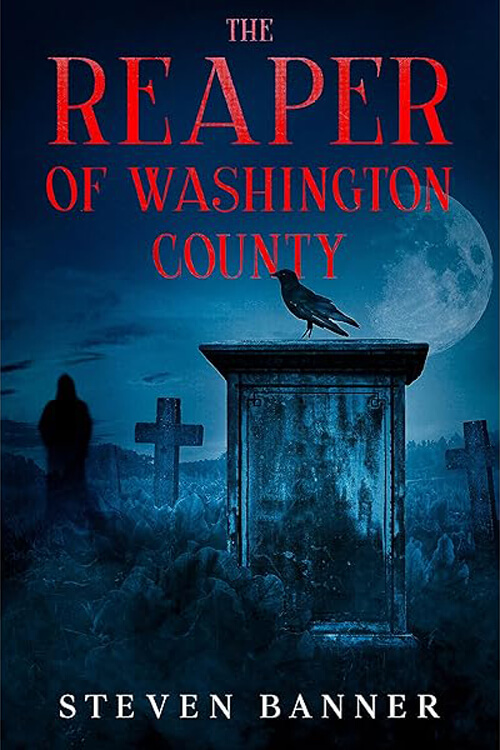
The Night Land
But she spoke and called me by my name; and when I had gone to the side of the road, that I should see her somewhat, and discover whether I knew her, I saw that she was surely that lady, who for her beauty was known through all of that sweet County of Kent as Lady Mirdath the Beautiful; and a near neighbor to me; for the Estates of her Guardian abounded upon mine.
Yet, until that time, I had never met her; for I had been so oft and long abroad; and so much given to my Studies and my Exercises when at home, that I had no further Knowledge of her than Rumour gave to me odd time; and for the rest, I was well content; for as I have given hint, my books held me, and likewise my Exercises; for I was always an athlete, and never met the man so quick or so strong as I did be; save in some fiction of a tale or the mouth of a boaster.
Now, I stood instantly with my hat in my hand; and answered her gentle bantering so well as I might, the while that I peered intent and wondering at her through the gloom; for truly Rumour had told no tale to equal the beauty of this strange maid; who now stood jesting with so sweet a spirit, and claiming kinship of Cousinhood with me, as was truth, now that I did wake to think.
And, truly, she made no ado; but named me Frank by my lad’s name, and gave laughter and right to me to name her Mirdath, and nothing less or more—at that time. And she bid me then to come up through the hedge, and make use of a gap that was her special secret, as she confessed, when she took odd leave with her maid to some country frolic, dressed as village maids; but not to deceive many, as I dare believe.
And I came up through the gap in the hedge and stood beside her; and tall she had seemed to me when I looked up at her; and tall she was, in truth; but indeed I was a great head taller. And she invited me then to walk with her to the house, that I meet her Guardian and give word to my sorrow that I had so long neglected to make call upon them; and truly her eyes to shine with mischief and delight, as she named me so for my amissness.
But, indeed, she grew sober in a moment, and she set up her finger to me to hush, as that she heard somewhat in the wood that lay upon our right. And, indeed, something I heard too; for there was surely a rustling of the leaves, and anon a dead twig crackt with a sound clear and sharp in the stillness.
Read or download Book
William Hope Hodgson
William Hope Hodgson (15 November 1877 – 19 April 1918) was an English author. He produced a large body of work, consisting of essays, short fiction, and novels, spanning several overlapping genres including horror, fantastic fiction, and science fiction. Hodgson used his experiences at sea to lend authentic detail to his short horror stories, many of which are set on the ocean, including his series of linked tales forming the “Sargasso Sea Stories”. His novels, such as The House on the Borderland (1908) and The Night Land (1912), feature more cosmic themes, but several of his novels also focus on horrors associated with the sea. Early in his writing career Hodgson dedicated effort to poetry, although few of his poems were published during his lifetime, he also attracted some notice as a photographer and achieved renown as a bodybuilder. He died in World War I at age 40.
Early years and life at sea
Hodgson was born in the hamlet of Blackmore End near Braintree in Essex, the son of the Reverend Samuel Hodgson, an Anglican priest, and Lissie Sarah Brown. He was the second of 12 children, three of whom died in infancy. The death of a child is a theme in several of Hodgson’s works including the short stories “The Valley of Lost Children”, “The Sea-Horses”, and “The Searcher of the End House”. Hodgson’s father was moved frequently and served 11 different parishes in 21 years, including one in Ardrahan, County Galway, Ireland. This setting was later featured in Hodgson’s novel The House on the Borderland. Hodgson ran away from his boarding school at age 13, to become a sailor. He was caught and returned to his family, but eventually received his father’s permission to be apprenticed as a cabin boy and began a four-year apprenticeship in 1891. Hodgson’s father died shortly thereafter, of throat cancer, leaving the family impoverished; while William was away, the family subsisted largely on charity. After his apprenticeship ended in 1895, Hodgson began two years of study in Liverpool and was then able to pass the tests and receive his mate’s certificate; he then began several more years as a sailor. At sea, Hodgson experienced bullying. This led him to begin a program of personal training.[6] According to Sam Moskowitz.
Most famous works
Hodgson is most widely known for two works. The House on the Borderland (1908) is a novel in which H. P. Lovecraft, in his long essay “Supernatural Horror in Literature”, wrote, “But for a few touches of commonplace sentimentality [it] would be a classic of the first water”. The Night Land (1912) is a much longer novel, written in an archaic style and expressing a somber vision of a sunless far-future world; Lovecraft described it as “one of the most potent pieces of macabre imagination ever written”. These works both contain elements of science fiction, although they also partake of horror and the occult. According to critical consensus, in these works, despite his often labored and clumsy language, Hodgson achieves a deep power of expression that focuses on a sense not only of terror but also of the ubiquity of potential terror, of the thinness of the invisible boundary between the world of normality and an underlying, unaccountable reality for which humans are not suited. The Ghost Pirates (1909) has less of a reputation than The House on the Borderland, but is an effective seafaring horror story of a ship attacked and ultimately dragged down to its doom by supernatural creatures. The book purports to be the spoken testimony of the sole survivor, and the style lacks the pseudo-archaism that makes The Boats of the “Glen Carrig” (1907) and The Night Land tedious reading for many.
Hodgson is also known for his short stories featuring recurring characters: the “detective of the occult” Thomas Carnacki, and the smuggler Captain Gault. The Carnacki story “The Whistling Room” has been reprinted in numerous anthologies, including collections introduced by Alfred Hitchcock. Hodgson’s single most famous short story is probably “The Voice in the Night” (1907), which has been adapted for film twice. Another story is regarded highly by critics as “The Shamraken Homeward-Bounder”.
Hodgson’s work is said to have influenced H.P. Lovecraft, even though Lovecraft did not read his works until 1934. In a 2009 essay, China Miéville traces the origin of “the tentacle” as an object of horror to Hodgson’s The Boats of the “Glen Carrig”, but the motif had already been used by M. R. James in “Count Magnus”, which Lovecraft first read shortly before employing the motif.






